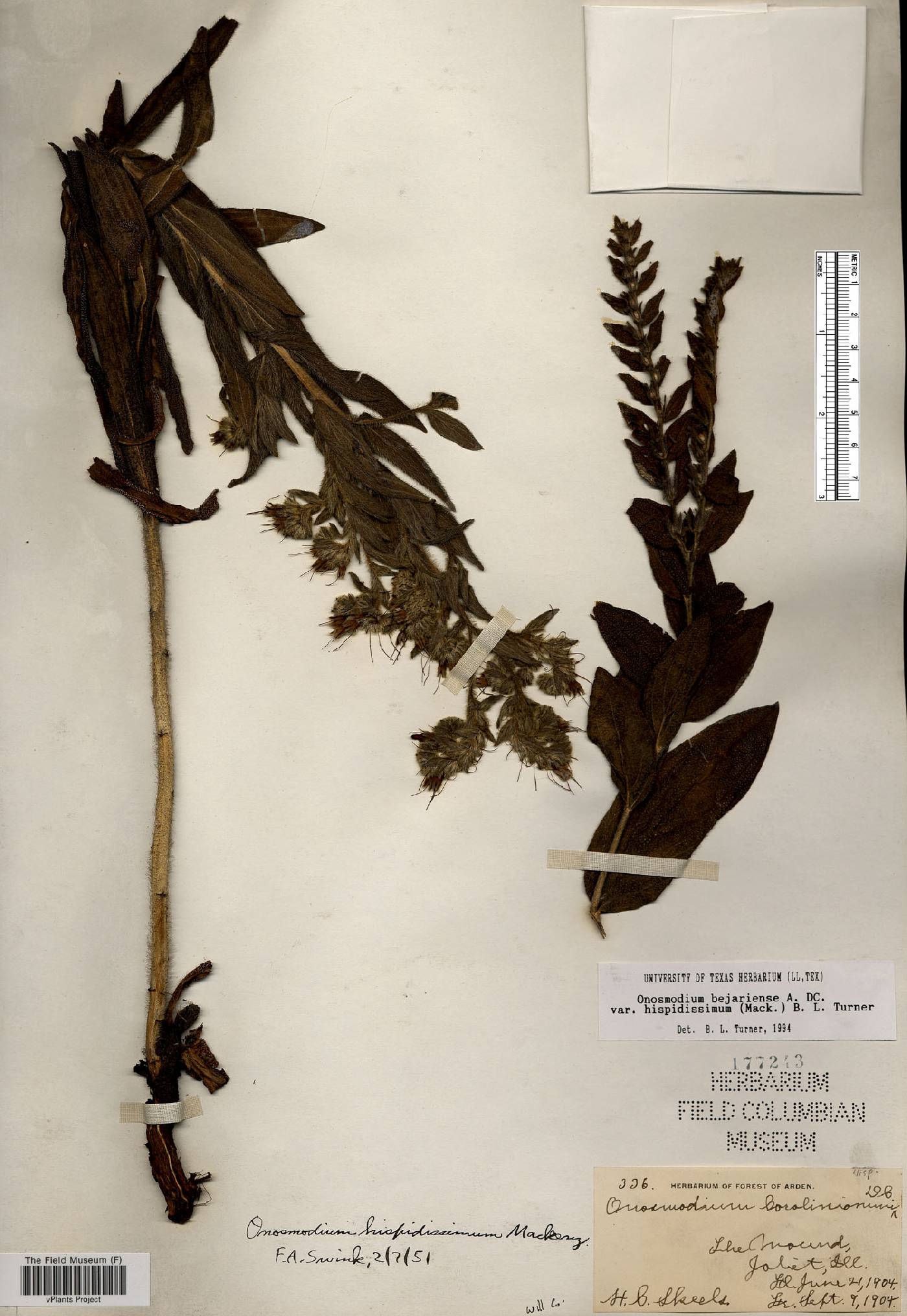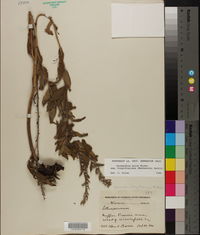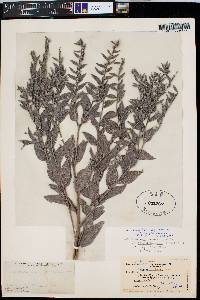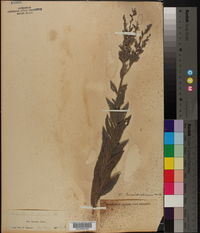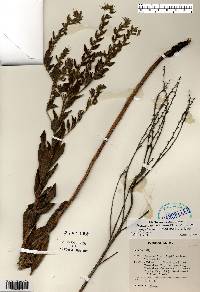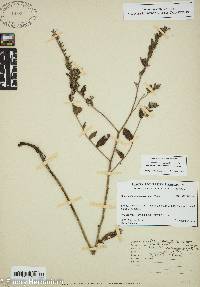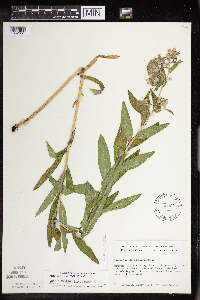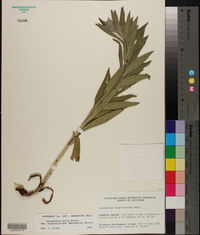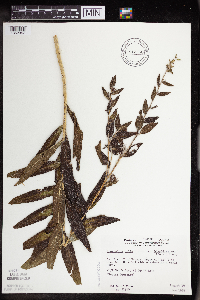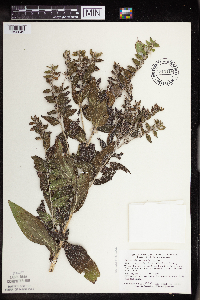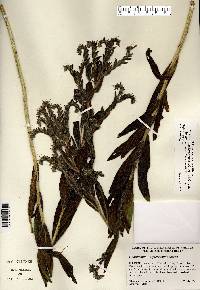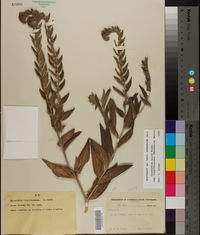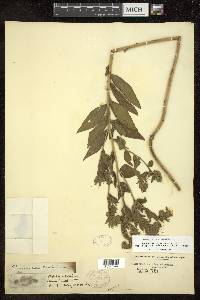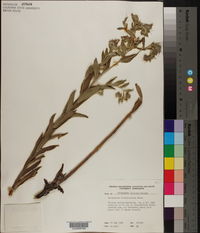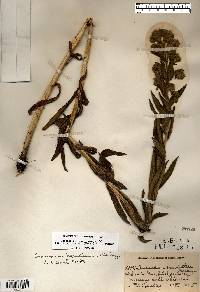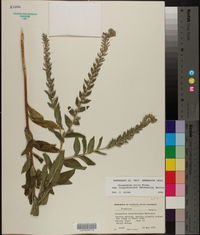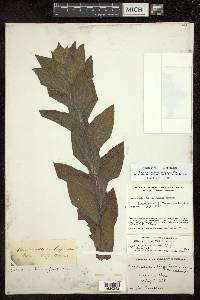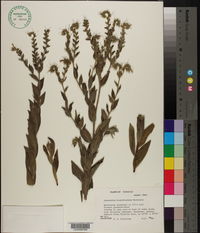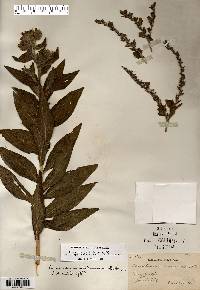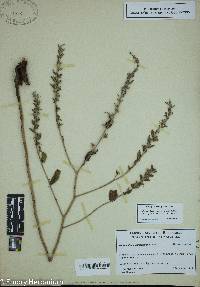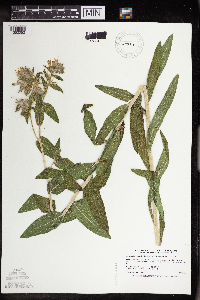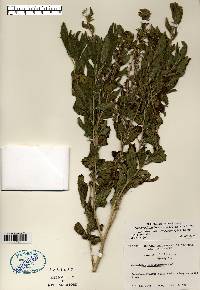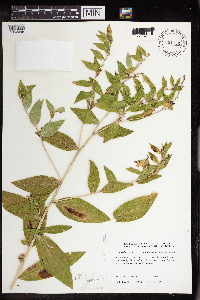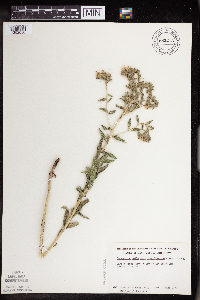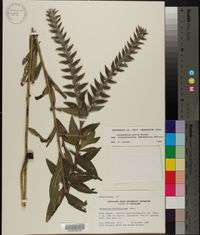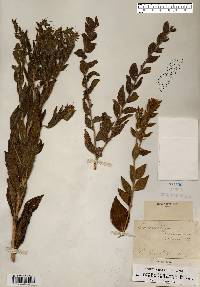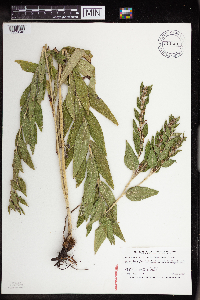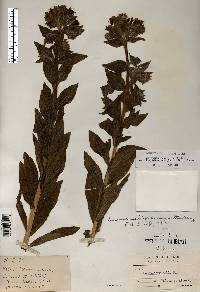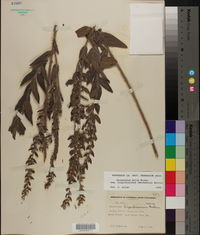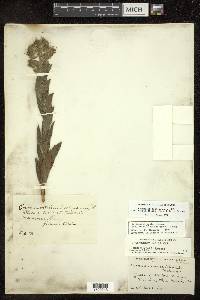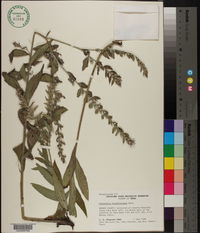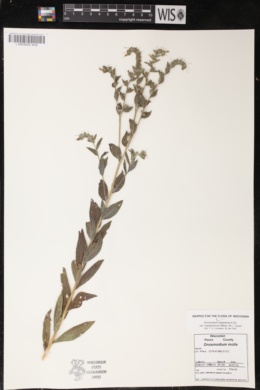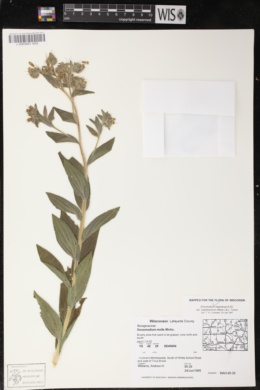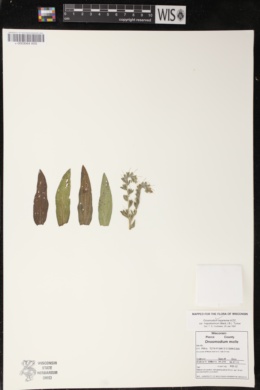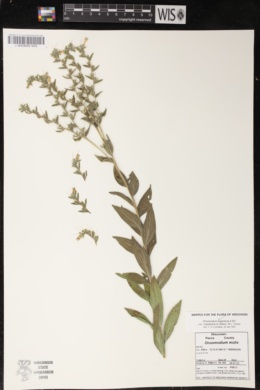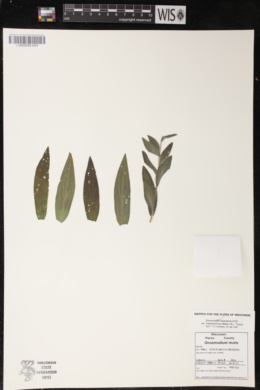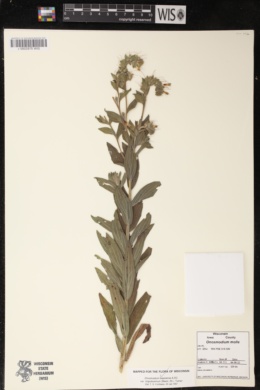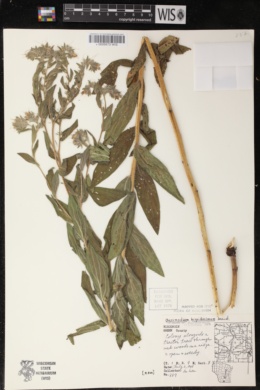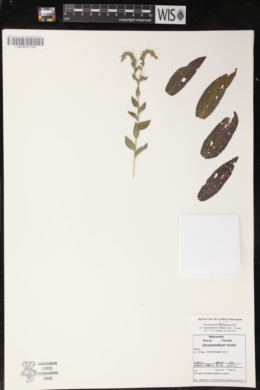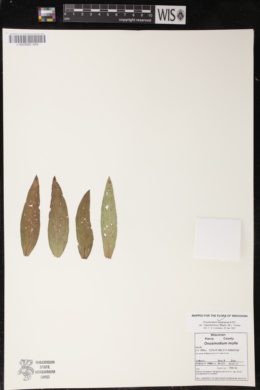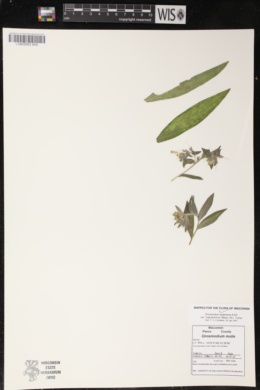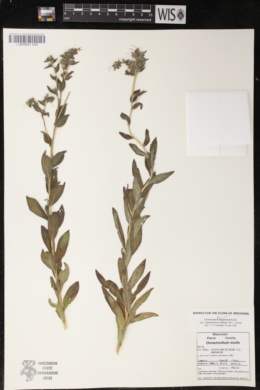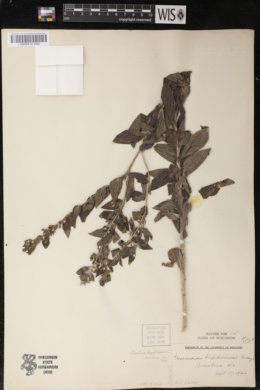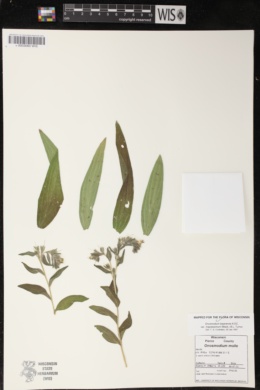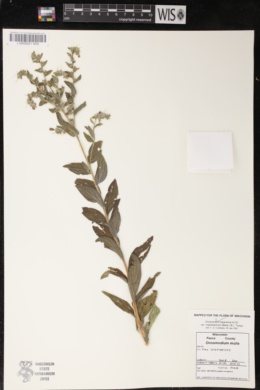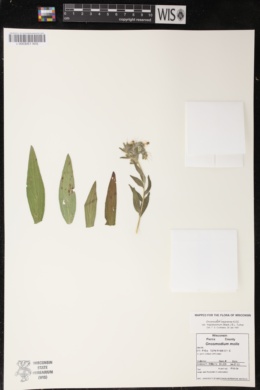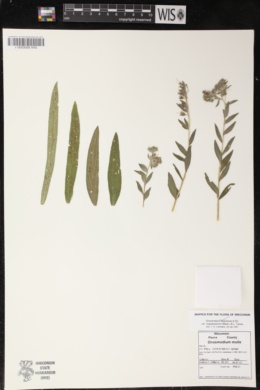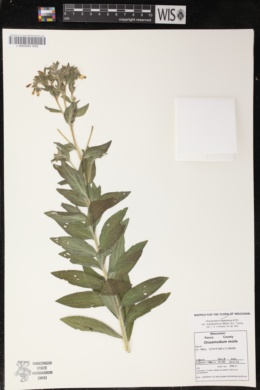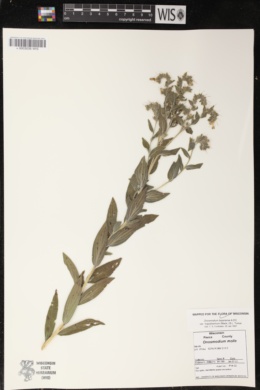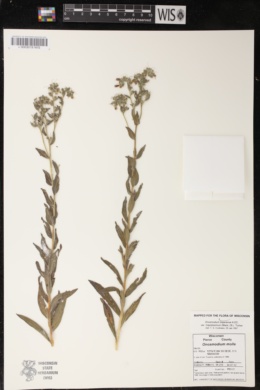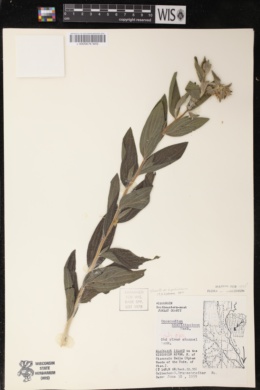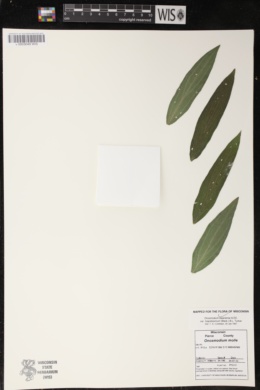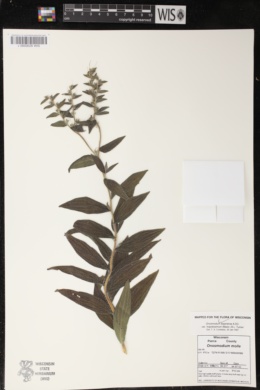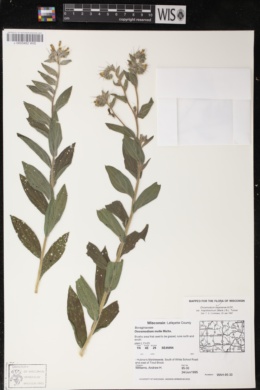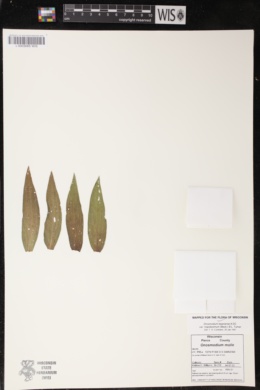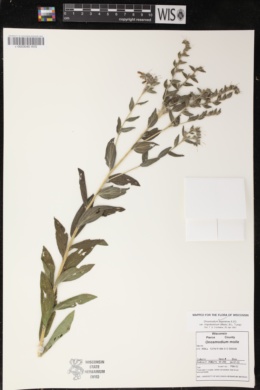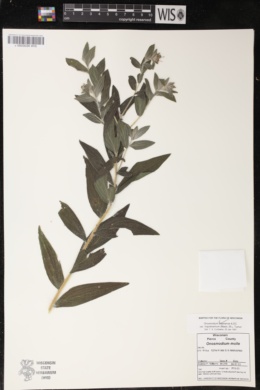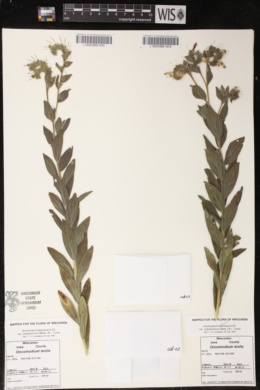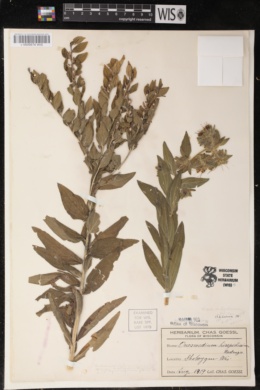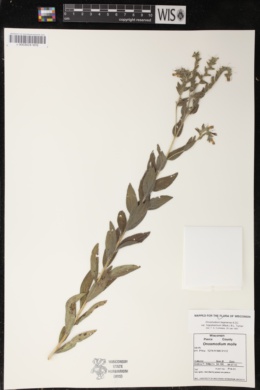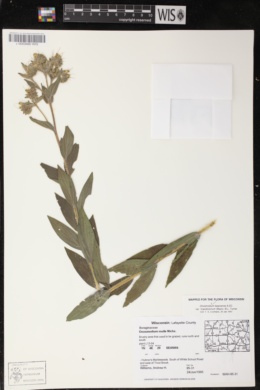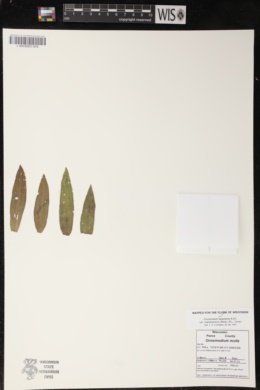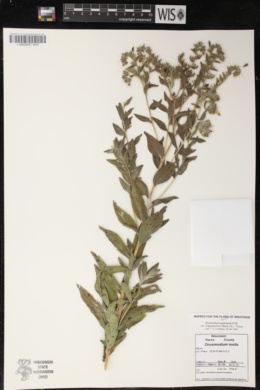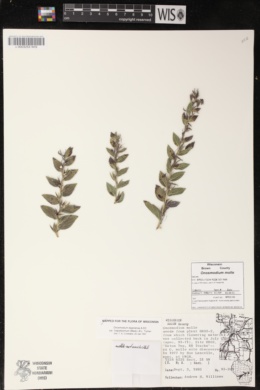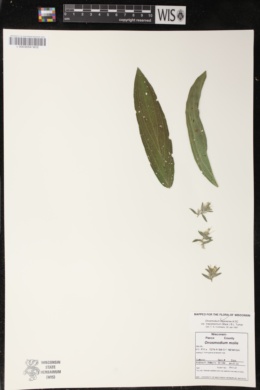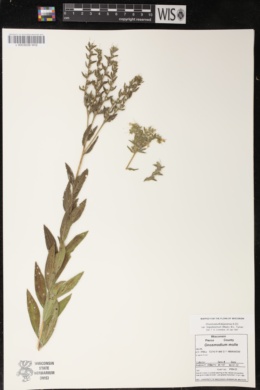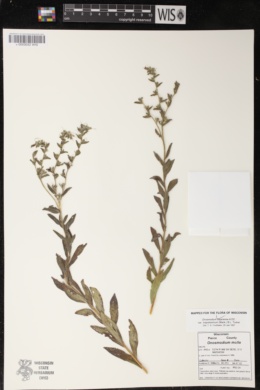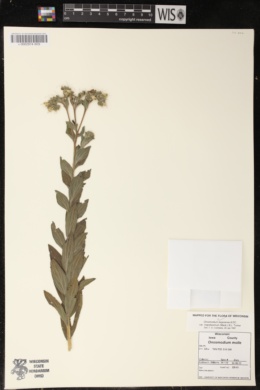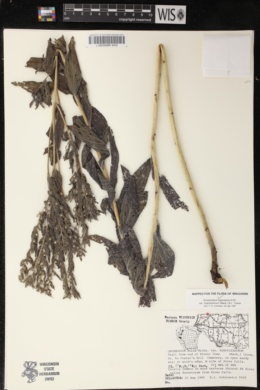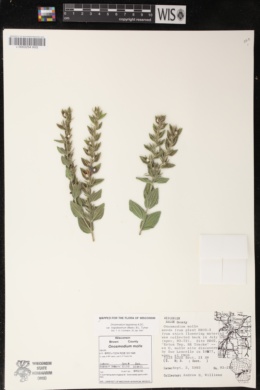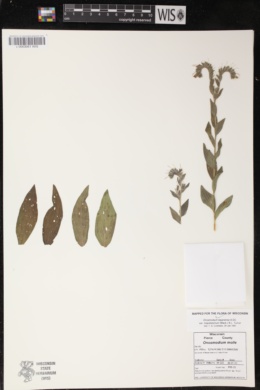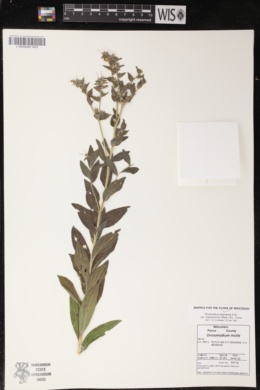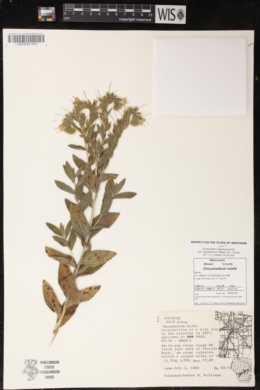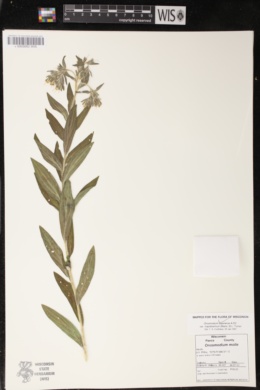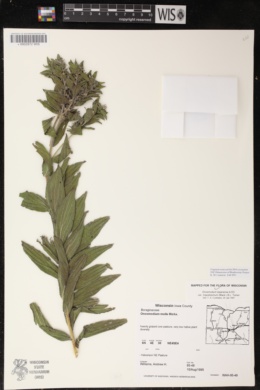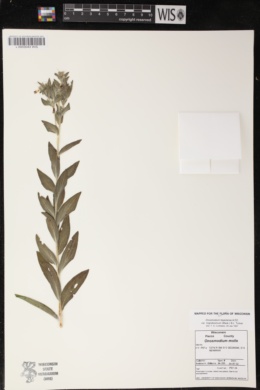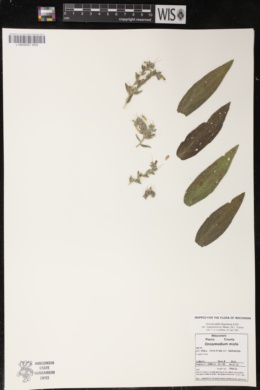
|
|
|
|
Family: Boraginaceae
|
Perennial herb 30 cm - 1.2 m tall Leaves: numerous, alternate, stalkless, 8 - 15 cm long, 1.5 - 4 cm wide, lance-shaped or narrowly egg-shaped, non-toothed, coarsely hairy, and with obvious lateral veins. The basal leaves are smaller than the stem leaves, but they fall off early in the season. Inflorescence: of several, alternate, coarsely hairy, somewhat arching, long, spike-like clusters at the top of the stem, with each short-stalked flower subtended by a bract. Flowers: numerous, dull white with greenish tips, 0.6 - 1 cm tall, more or less radially symmetric, tubular to funnel-shaped with short erect petal lobes. Sepals: five, very narrow, linear, about as long as the petal tube, and coarsely hairy. Petals: hairy, five, but fused for most of their length into a white tube, then separating into five, erect, greenish, shorter, narrowly triangular, distinctly pointed lobes which extend beyond the sepals. Stamens: five, attached to top of petal tube, with 1.5 - 3.5 mm long anthers, but not extending beyond petal tube. Pistil: with one, four-lobed, superior ovary; and a single, long, slender, threadlike style which is greatly exserted beyond the petal tube. Fruit: usually one or two, but up to a cluster of four, 2.5 - 3 mm tall, erect, brownish tinged, egg-shaped, more or less dull and smooth, bony nutlets with a constriction near the base forming a collar. Root: stout and woody. Stems: several, robust, green, coarsely rough with spreading hairs. Similar species: Onosmodium bejariense var. hispidissimum is most similar to O. bejariense var. occidentale, except that variety is typically smaller, has leaves only up to 8 cm long and 2 cm wide, it flowers are larger (up to 2 cm tall) with the petal tube much longer than the sepals, the petal tubes have both a narrowed and flared portion with more spreading petal lobes, and its nutlets are smooth, shining, larger (up to 5 mm tall), and lack a basal collar. Also similar is the typical variety O. bejariense var. bejariense, which is south of our area and can be distinguished by its smaller size, the covering of appressed hairs which give the plant an ashy-white color, the longer petal tube which extends beyond the sepals, and the nutlets are dull, pitted, and lack a basal collar. Onosmodium bejariense var. hispidissimum is also very similar to O. virginianum, which exists east of the Chicago Region, except that species has yellow petal lobes and the nutlets lack a basal collar. Flowering: May to July Habitat and ecology: Somewhat rare except for some prairies and degraded gravely areas with somewhat calcareous soils in Boone, Grundy, Kankakee, and Will counties, in Illinois. Occurence in the Chicago region: native Notes: This taxon is more common in the Appalachian mountains, but does extend to the western edge of the eastern deciduous forests. This used to be placed under the species name Onosmodium molle as O. molle var. hispidissimum, or even as a separate species O. hispidissimum, but Turner (1995) aligned this with a Texan species, O. bejariense, based on the intergradation between the taxa. The name Onosmodium molle became obsolete. Author: The Field Museum |

